How long does it take for cory catfish eggs to hatch? In this ultimate guide, we will delve into the intriguing topic of Cory Catfish egg incubation, shedding light on the duration required for their hatching process.
Corydoras, the beloved freshwater fish, have garnered immense popularity among aquaculture enthusiasts.
With their social nature and preference for group living, they thrive when kept in sizable clusters of 6 to 7 individuals or more, making them excellent additions to community aquariums.
These charming bottom feeders also serve as beneficial tank companions, particularly for messy fish, as they assist in maintaining tank cleanliness.
Known for their scavenging habits, Corydoras spend a significant portion of their lives foraging for food scraps, algae, and biofilm within their aquatic habitats.

How Long Does It Take for Cory Catfish Eggs to hatch?
The short answer to how long does it take for cory catfish eggs to hatch is…
Cory Catfish eggs typically take around three to six days to hatch. However, it’s important to note that the hatching time can be influenced by factors such as water temperature.
If the water temperature remains below 82 degrees Fahrenheit, the eggs may take longer to hatch.
During the hatching process, the eggs will appear smooth. You may be able to observe the movement of the developing fry inside.
Breeding Cory Catfish
Understanding Cory Catfish Breeding and Egg Hatching (Complete Guide)
Cory catfish are known to lay their eggs during dusk when conditions are favorable. Unlike other fish species that lay
Prices pulled from the Amazon Product Advertising API on:
Product prices and availability are accurate as of the date/time indicated and are subject to change. Any price and availability information displayed on [relevant Amazon Site(s), as applicable] at the time of purchase will apply to the purchase of this product.
In this article, we will discuss the steps involved in raising Corydoras and ensuring the safe hatching of their eggs.
Distinguishing Male and Female Cory Catfish
Differentiating between male and female Cory Catfish can be challenging until they reach sexual maturity, which usually takes at least five months. However, once they become sexually active, certain behavioral and physical characteristics can help identify their gender.
Physical differences
Physical differences between male and female Cory Catfish include the body shape. Females are typically wider, with a thicker abdomen compared to males.
It’s important to note that these characteristics can vary slightly among different Cory Catfish species, so it’s advisable to consult species-specific references or experts for accurate identification.
Behavioral differences
Male Cory Catfish often exhibit a distinct behavior pattern of harassing females. Males will follow a female cory around while courting her. Males present their abdomen toward her head, creating what is known as the “Corydoras T-position.”
Male/female ratio
Maintaining a harmonious environment usually involves a male-female ratio of one male per female or having two females for each male.

Sexing young corydoras catfish
Sexing young catfish is not possible as they are sexually immature. It is recommended to wait for up to a year to observe their correct sex. Attempting to breed them before sexual maturity can be stressful for the fish and should be avoided.
Male Corydoras typically reach sexual maturity between 6 to 9 months of age. However, it is advisable to wait until they are fully mature before breeding them.
Monitoring their size can provide some indication of maturity, and maintaining a group of at least 15-20 healthy fish can enhance the chances of successful spawning in the future.
It is interesting to note that Corydoras do not change their sex; once they are born male, they will remain male throughout their lives.
Setting up a breeding tank for Cory Catfish
Prices pulled from the Amazon Product Advertising API on:
Product prices and availability are accurate as of the date/time indicated and are subject to change. Any price and availability information displayed on [relevant Amazon Site(s), as applicable] at the time of purchase will apply to the purchase of this product.
Including live plants, such as Java moss, Java Fern, and Pennyworth, in the breeding tank not only enhances the fry’s safety during their early stages but also provides a natural food source for them.
These plants add a natural touch to the tank while serving as hiding places and natural food source for the fry.
Using a heater to maintain a temperature of between 74° and 80° F is ideal for breeding most species of Cory fish.
Test the pH and alkalinity of the tank water. Ideally, a pH between 7.0 and 8.0 a, and alkalinity between 3° and 10° dKH (54ppm to 180ppm) will best suit breeding.
Preparing Cories for breeding
To prepare Cory catfish for breeding, ensure they are sexually mature, as young or immature fish will not breed.
Some breeders use rainwater in the aquarium to encourage more natural mating.
Feeding the fish live or fresh food is recommended by experts, as it helps condition them for reproduction, leading to improved egg quality and breeder recovery.
Encouraging Spawning
Encouraging spawning in Corydoras catfish can be achieved through various methods. One effective technique is to perform a water change of approximately 25% with slightly cooler water temperature.
This change in temperature can trigger the fish’s reproductive behavior and stimulate spawning. A drop in temperature mimics the dry season and triggers their natural reproductive behavior.
Another approach to encourage spawning is to create a darker environment for the fish. Some breeders use a breeding tank placed in darkness or opt for a black plastic garbage bin as a breeding container.
The reduced light can mimic natural conditions and promote the spawning behavior in Corydoras catfish.
These methods are not guaranteed to work in every case, as the breeding behavior of fish can be influenced by a combination of factors.
Monitoring the behavior of the fish and making adjustments as needed can help in achieving breeding success.

How do I tell if my Cory Catfish is with eggs?
To identify if your female Cory Catfish is preparing to spawn, look for a swollen abdomen, which is a sign that she is carrying eggs. Cory Catfish can develop eggs relatively quickly.
The age at which Corydoras catfish are ready to breed can vary based on the species, with some reaching sexual maturity around 9 to 12 months of age. Being aware of their readiness ensures that you don’t spend time raising fish that are not yet sexually mature.
Deposition of Corydoras Eggs
Female Corydoras catfish typically deposit their fertilized eggs on flat surfaces, often in clusters that attach to the chosen surface.
Look for signs of egg laying near on or near flat rocks, plants or water filters.
If the females have deposited their eggs, their abdomen will reduce in size.
Infertile Eggs
Unfertilized eggs laid by female Corydoras catfish are usually teardrop-shaped and can be found on the bottom of the tank. These infertile eggs are often a result of stress or the fish being immature in age.
Infertile eggs of Corydoras catfish tend to decay over time (they will develop a white fuzz over the egg), while fertile eggs have a hatching period of approximately five days.
A black band on the surface of the egg indicates its fertility and the potential for the development of a healthy fry. Additionally, fertile Corydoras eggs have gray spots of a dark color, while infertile eggs appear white or clear.
By making a single observation, you can determine which eggs to keep, as those that are fertile will produce live Corydoras catfish.
Note that not all healthy offspring will necessarily come from these fertile eggs. Some eggs may produce fry with poor health.
As the keeper, it is necessary to wait until the eggs hatch to identify the most vigorous Corydoras offspring and cull the others.
How long does it take for cory catfish eggs to hatch? (Incubation and Hatching Time)
Corydoras eggs typically take three to six days to hatch. During this time, it is important to maintain optimal conditions in the breeding tank. Monitoring the water parameters and temperature is crucial for the successful development of the eggs.
It is particularly important to be cautious if fungus is present on the eggs, as it can be detrimental to their development. Remove these eggs if you can and add Methylene Blue anti-fungal medication to the water.
Separating the Eggs
For the safety and successful hatching of the eggs, it is advised to remove them from the breeding tank and transfer them to a separate hatchery tank. Carefully transfer the eggs to the hatchery tank and keep them there until they hatch.
Alternatively, if the breeding tank is set up for raising the fry, after the eggs are laid, remove the adult fish. The fry can then remain in this tank once they hatch.
How long does it take for cory catfish eggs to hatch? (what to do after hatching)
After hatching, the baby Corydoras catfish start consuming tiny plankton. You may notice thread-like structures sticking out of their stomachs while feeding.
To support their healthy growth, the fry should be provided with a protein-rich diet. Feed them live foods like brine shrimp nauplii multiple times a day. Introduce powdered fry food or crushed flake food after a week.
Maintain optimal water conditions and avoid overfeeding to prevent excess food debris.
At three to four weeks, the fry can transition to commercial feed. Daphnia and micro worms are also suitable food options.
Take extra care of the fry as they are initially small and delicate, ensuring a well-maintained environment for their development.
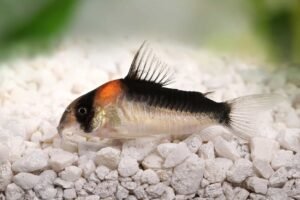
Preparing for New Cory Catfish Fry and Avoiding New Tank Syndrome
To accommodate the growing Cory catfish fry and provide space for future inhabitants, it is advisable to set up a larger tank in advance.
You will have approximately four weeks from the time the eggs are laid until the fry are ready to join the rest of the family.
New tank syndrome
New tank syndrome can occur if the aquarium’s filter system is inadequate or uncycled. It is crucial to have beneficial bacteria present in the tank to maintain low levels of ammonia.
Sudden and significant changes in water parameters can harm the helpful bacteria and lead to fish diseases.
 To prevent new tank syndrome and ensure a healthy environment for your fish:
To prevent new tank syndrome and ensure a healthy environment for your fish:
- Set up a Properly Sized Tank: Plan for a larger tank to accommodate the growing fry and future occupants. This will provide ample space and help prevent overcrowding.
- Cycle the Tank: Establish a beneficial bacterial colony by cycling the tank before adding fish. This process helps build up the necessary bacteria to convert harmful ammonia into less toxic substances.
- Monitor Water Parameters: Regularly test and monitor the water parameters, including ammonia, nitrite, and nitrate levels. Aim for stable and appropriate levels to support the well-being of your fish.
- Avoid Sudden Water Changes: Gradually introduce any changes in water parameters to prevent shocking the system and harming the beneficial bacteria. Monitor and adjust temperature, pH, and other water parameters gradually and with care.
Breeding Frequency of Corydoras
Prices pulled from the Amazon Product Advertising API on:
Product prices and availability are accurate as of the date/time indicated and are subject to change. Any price and availability information displayed on [relevant Amazon Site(s), as applicable] at the time of purchase will apply to the purchase of this product.
To ensure the well-being of the fish, it is advisable to provide a recovery period between breeding cycles. This allows the fish to regain their strength and replenish their energy reserves before attempting another breeding. Waiting at least a few months between breeding cycles is generally recommended.
Corydoras catfish can lay eggs throughout the year. With a good diet and proper water quality, these fish can breed consistently. Each catfish can produce around 10-15 eggs. The mother typically deposits her eggs between glass surfaces or near plants.
By following a balanced breeding schedule and providing adequate intervals between breeding cycles, you can promote the health and longevity of your Corydoras catfish population.
Definition of Cory Catfish
Cory Catfish, scientifically known as Corydoras, is a South American species of catfish that inhabits creeks and shallow water beds.
These bottom-dwelling fish exhibit playful behavior as they sift through sand and gravel in search of food. They thrive in environments with dense vegetation, which provides them with hiding spots.
Charles Darwin encountered Cory Catfish during his famous Beagle voyage in the early 19th century, discovering them between 1831 and 1836.
These catfish prefer shallow, not too cold water with slow flows, and there are over 200 known species of Cory catfish.

Guide to keeping a colony of adult cory catfish
Cory Catfish have a gentle temperament and are enjoyable to observe. They are compatible with most fish but should not be kept with territorial or aggressive species like cichlids.
They prefer flowing water and benefit from well-maintained water filters and a tank environment with adequate plants, wood, and stones for resting and hiding.
Cory Catfish are social creatures and should be kept in groups of at least five to thrive and display their best behavior.
Corydoras Diet
In terms of diet, Cory Catfish are omnivorous scavengers that feed on the bottom of the tank.
It is important to not rely solely on leftover food being fed to the other tank dwellers, and instead provide them with a balanced diet of high-quality animal and vegetable protein. There are may commercial cory food products available.
Overfeeding should be avoided as it can lead to water pollution and negatively impact the fish’s health by increasing nitrate and ammonia levels.
Prices pulled from the Amazon Product Advertising API on:
Product prices and availability are accurate as of the date/time indicated and are subject to change. Any price and availability information displayed on [relevant Amazon Site(s), as applicable] at the time of purchase will apply to the purchase of this product.
Water parameters for cory catfish
Maintaining suitable water parameters is crucial for the well-being of Corydoras catfish. It is recommended to keep the pH level between 6.0 and 7.4, while the temperature should be maintained within the range of 71°F to 84°F.
Corydoras catfish are highly sensitive to changes in water temperature. Having an aquarium heater is important to ensure a stable temperature that supports the health of these aquatic animals.
Fluctuations in temperature can weaken their immune system, making them more susceptible to diseases and other unfavorable conditions.
While minor variations in water parameters can be tolerated, it is essential to strive for stability. Corydoras catfish are particularly sensitive to ammonia and nitrate, which can be harmful to them.
Specific water parameter requirements may vary depending on the species of corydoras.
Corydoras tank size
For a group of five medium to large-sized Cory Catfish, a minimum tank size of 30 gallons is recommended.
Substrate
An essential part of the tank, the substrate must be soft and rounded. Otherwise, it can hurt the barbels of the fish, which are very sensitive. It is best to use fine sand, gravel, small stones, or coarse sand can cause discomfort to the animal.
Common Diseases in Cory Catfish and their Treatment
Bacterial infections
 Bacterial infections are among the most prevalent diseases that can affect not only Cory catfish but also other species in an aquarium. Bacteria tend to thrive in poor water conditions, making it crucial to maintain good water quality to prevent infections.
Bacterial infections are among the most prevalent diseases that can affect not only Cory catfish but also other species in an aquarium. Bacteria tend to thrive in poor water conditions, making it crucial to maintain good water quality to prevent infections.
Fungal infections
Fungal infections are another common disease that can affect Cory catfish. These infections are often a result of turbulent conditions and ammonia spikes in the tank.
Signs of fungal infection include increased nervous behavior, scratching against tank walls or decorations, and the appearance of tufts on the eyes and face.
Prevention of disease
Prices pulled from the Amazon Product Advertising API on:
Product prices and availability are accurate as of the date/time indicated and are subject to change. Any price and availability information displayed on [relevant Amazon Site(s), as applicable] at the time of purchase will apply to the purchase of this product.
- Maintain Water Quality: Regularly test and monitor water parameters such as pH, ammonia, nitrite, and nitrate levels. Perform partial water changes as needed to maintain optimal water conditions.
- Quarantine and Treatment: If you suspect a bacterial or fungal infection, promptly isolate the affected fish in a separate quarantine tank. This will help prevent the spread of the disease to other tank inhabitants.
Consult with an aquatic specialist for proper diagnosis and appropriate treatment options, which may include antibiotics or antifungal medications.
- Improve Tank Conditions: Address any underlying issues that contribute to poor water quality, such as overstocking, overfeeding, or inadequate filtration. Ensure proper tank maintenance, including regular cleaning and removal of uneaten food and debris.
Taking preventive measures is crucial to avoid diseases in the first place. This includes maintaining a clean and well-maintained tank, providing proper nutrition, avoiding sudden changes in water parameters, and introducing new fish or plants after a quarantine period.
Remember, the specific treatment and prevention methods may vary depending on the type of infection and the recommendations of professionals in the field.
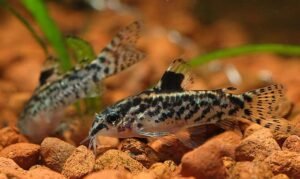
How long do Cory catfish live for?
With proper care, Cory Catfish can live up to five years. Providing them with a well-balanced diet, excellent water quality, and suitable living conditions can contribute to their longevity.
In their natural habitat, their lifespan is usually shorter due to predation and other environmental factors.

Final Thoughts (How long does it take for cory catfish eggs to hatch?)
How long does it take for cory catfish eggs to hatch? The short answer being three to six days.
In conclusion, breeding cory catfish can be a rewarding and fascinating endeavor for aquarists. By understanding their unique reproductive behavior and providing them with the right conditions, hobbyists can successfully breed these peaceful and sociable fish.
Through careful selection of compatible mates, appropriate tank setup, and proper care for eggs and fry, the joy of witnessing the entire breeding process from courtship to hatching can be experienced.
Not only does breeding cory catfish contribute to the conservation of this species, but it also offers enthusiasts the opportunity to deepen their understanding of aquatic life and create a thriving ecosystem within their own aquariums.
.







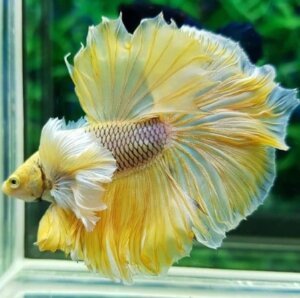

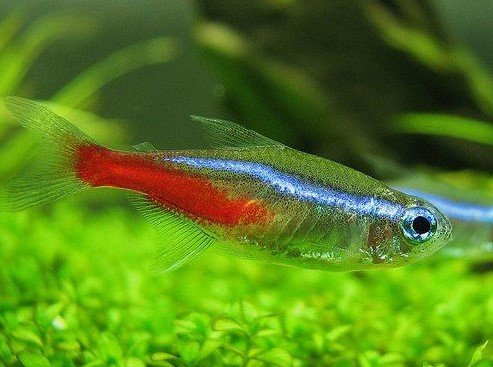

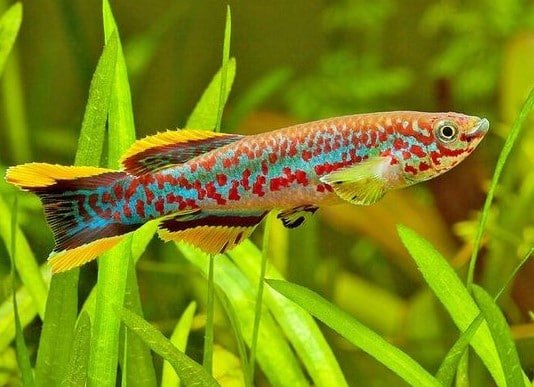

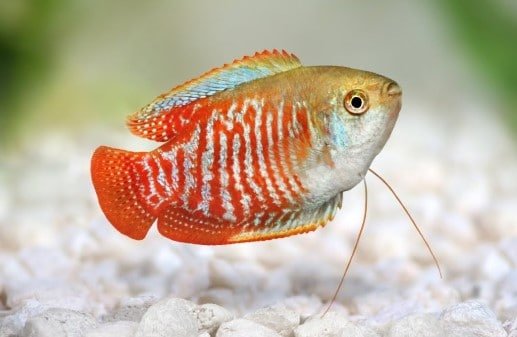
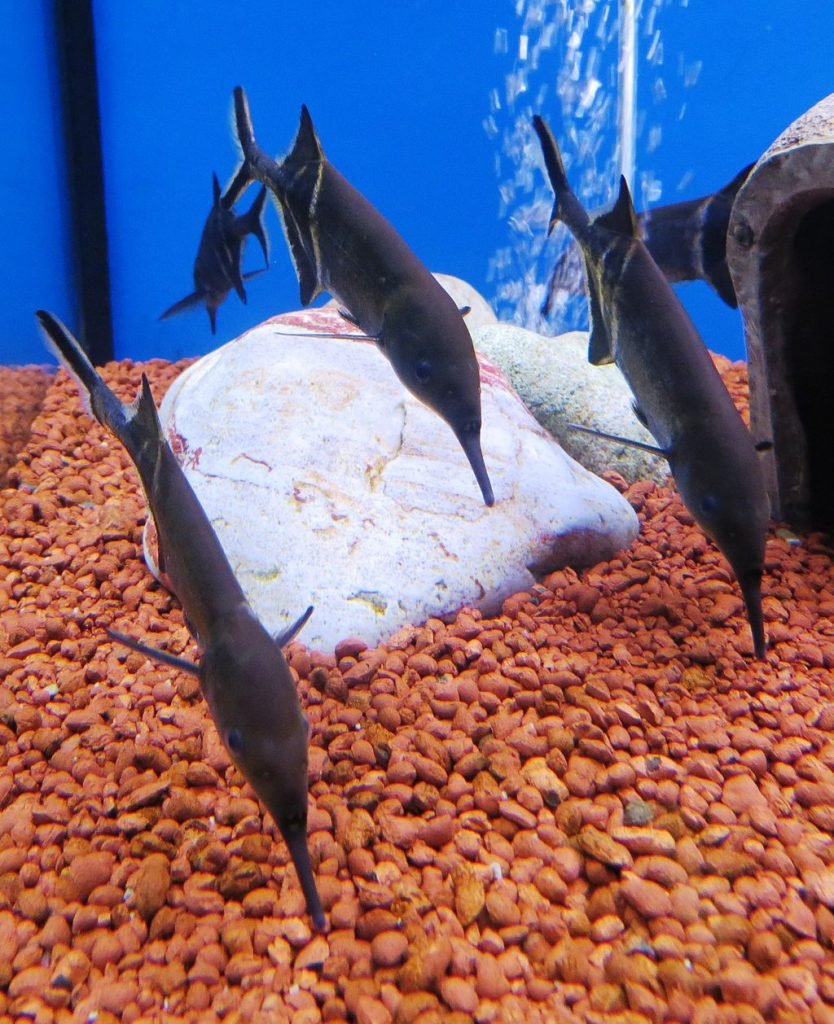


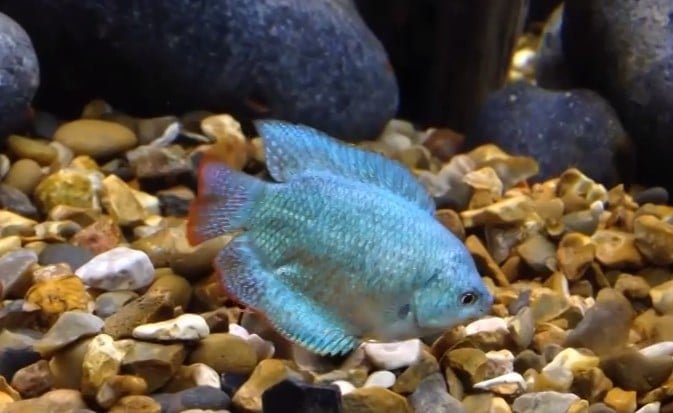


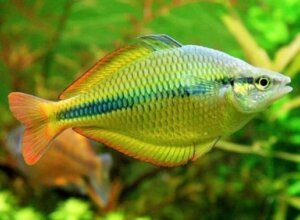
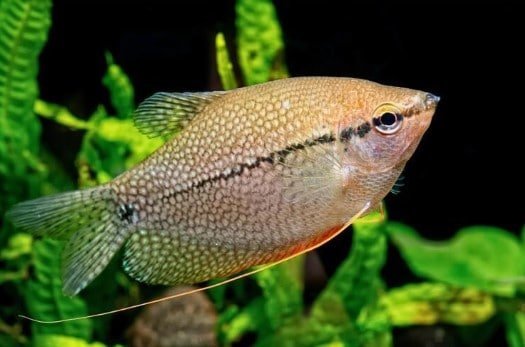
![[2023] The Ultimate Guide to Black Moor Goldfish Care [2023] The Ultimate Guide to Black Moor Goldfish Care](https://aquariumhunter.com/wp-content/uploads/2021/09/Black_Moor_Goldfish.jpg)

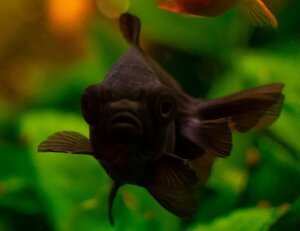




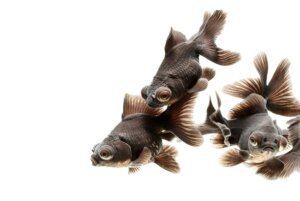





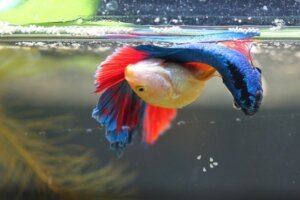









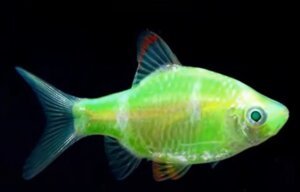





![[2023] Can goldfish live in tap water? (Tap, Distilled, Or Well Water?) [2023] Can goldfish live in tap water? (Tap, Distilled, Or Well Water?)](https://aquariumhunter.com/wp-content/uploads/2022/02/ryukin-goldfish-in-tank_Moo-teaforthree-Shutterstock.jpg)

![[2023] Baby Snapping Turtle: Complete Care Guide and Breed Info [2023] Baby Snapping Turtle: Complete Care Guide and Breed Info](https://aquariumhunter.com/wp-content/uploads/2022/02/IMG_5340_edit.jpeg)

![[2023] Ammonia Poisoning Betta: Preventions And Disease Healing [2023] Ammonia Poisoning Betta: Preventions And Disease Healing](https://aquariumhunter.com/wp-content/uploads/2022/02/2680154745_7a377a499b_o-30c89c214e4a4fc292d72ab0be3844cb.jpg)

![[2023] What Do Snapping Turtles Eat (The Complete Guide) [2023] What Do Snapping Turtles Eat (The Complete Guide)](https://aquariumhunter.com/wp-content/uploads/2022/01/what-do-snapping-turtles-eat.jpg)
